

Striving ahead with technology to bring quality public housing
Tremendous breakthrough for Customs Canine Force
Queue-free Smart Renewal service for further employment of foreign domestic helpers


Housing Department
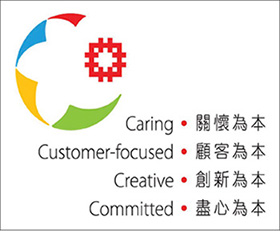
Every housing project undergoes thorough consultation and meticulous planning far beyond simply bricks-and-mortar construction. With ever-rising public expectations for sustainable housing development, HD strives to raise productivity and the quality of public housing through the use of innovative construction methods, technologies and designs; as well as listening to the voice of the community by taking an active role in communicating with stakeholders and liaising closely with the public through social media platforms and continuously strengthening information technology system applications.
To meet the challenges of providing quality and affordable housing in which residents can enjoy a pleasant living environment, HD grasps every opportunity to utilise new technologies in various aspects of its work, from planning to construction and quality control.
BIM helps coordinate and manage building information during design and construction stages as well as the entire building lifecycle. HD pioneered the use of BIM in 2005 when it was still an emerging technology and made creative and continuous enhancements in developing its own BIM technologies applicable to the construction cycle of public housing. The design teams make various uses of BIM during the planning and design stages, such as micro-climate studies and air ventilation assessments.
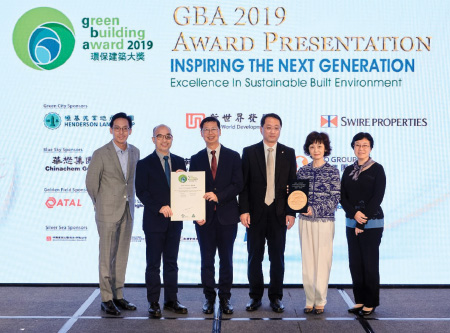
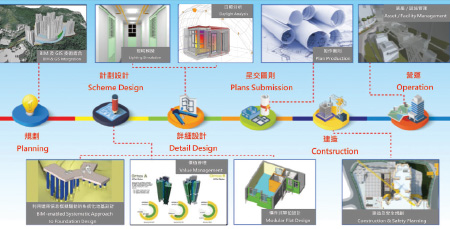
To optimise the site potential, HD fully adopts a site-specific approach in housing block design and develops a Modular Flat Design (MFD) library using BIM technology from which project teams can select different models in conjunction with computer-simulated site and natural environments to help overcome site constraints, thus helping to achieve consistent building standards and speeding up design process.
Besides, by developing HD’s own “BIM-enabled systematic approach to foundation design (BIM-SAFD)” for three-dimensional (3D) visualisation of geological conditions, structural engineers can accurately set the pile positions when preparing drawings and piling schedules; and quantity surveyors can readily access the required digital data for tender preparation. BIM-SAFD can also interface with other software to produce 3D foundation models showing the geological layers and piles relationship, and automatically determine the minimum founding level of each pile into bedrock stratum.
BIM can assist construction professionals to rehearse the whole construction process, visualising even the less significant daily routines by generating a 3D virtual workflow model. This helps reduce uncertainties in project delivery, avoid mistakes and enhance site safety for effective management of the construction workflow and timely completion of works.
HD is committed to the continuous enhancement of its efficiency in planning, design and construction. Since the 1960s, precast components have been used to construct public housing. From the 1990s onwards, further precast components, such as precast façades, precast staircases and semi-precast slabs, have also been adopted.
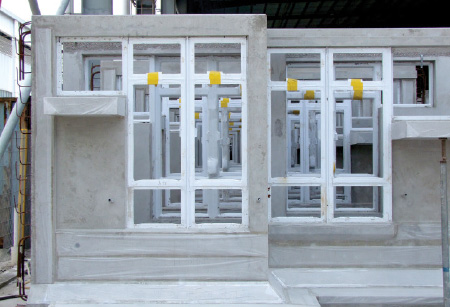
HD then migrated its precast concrete technology further from planar to volumetric components. In the Kwai Chung Flatted Factory Redevelopment Project which commenced in 2002 (the current Pak Kwai House and Hop Kwai House in Kwai Chung Estate), precast structural walls, volumetric precast bathrooms and volumetric precast kitchens were adopted. The use of precast concrete technology has recently been extended to other volumetric precast components, such as balconies, refuse chutes, lift shafts, manholes, ground floor water tanks, roof water tanks, roof parapets and external walls of roof machine rooms—with some projects achieving a precast rate of 90% on plan for a typical floor. This can enhance site safety, building quality and quantity, productivity and environmental performance.
The MiC method has been further introduced in HA projects. A 12-storey domestic block, comprising 240 flats in the Public Housing Development at Tung Chung Area 99, has been selected as a pilot project to adopt the concrete MiC method, commencing mid-2021 and scheduled for completion in 2024. Apart from precast components, finishes, fixtures and fittings will also be completed in the factory before delivery to the site for assembly, thus enhancing quality control and work safety. The local construction industry is facing labour shortages and an ageing workforce, and this can effectively reduce reliance on manual labour while enhancing site productivity.
In pursuit of a digitised site inspection system, HD started developing the DCSMS in 2014. As at April 2021, HD has launched 11 mobile applications (Apps) under DCSMS for use by contractors and site staff. With a smartphone and the DCSMS Building Works Inspection App and Building Services Works Inspection App, site staff can easily access drawings and inspect guidelines online, as well as compiling statistics, communicating instantly with contractors, and retrieving records securely. Upon completion of a construction task, contractors can use the Request for Inspection App to submit an inspection request and check its status. The Site Alert App and the Safety Alert App enable site staff to issue site alerts to contractors and communicate with contractors by instant messaging, and contractors can submit reports and root cause analysis to HD for generating accident and incident statistics reports effectively while reducing paper use.
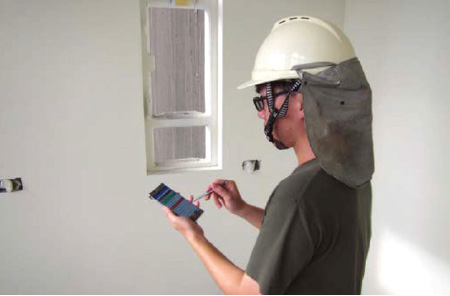
To address the problem of labour shortages and an ageing workforce, HD encourages contractors to apply construction robotics to perform repetitive tasks in public housing construction, such as external wall painting, indoor painting and laying floor tiles, to enhance productivity, quality, safety and environmental performance in construction sites.
HA has received recognition from the industry for its efforts—earning multiple awards and commendations for its outstanding performance, such as the Green Building Award 2019 Merit Award for the BIM-SAFD from the Hong Kong Green Building Council, and two awards, namely, BIM Organisations 2020 and BIM Projects 2020 for the production of the HA BIM Standards and Guidelines at the recent Celebration of BIM Achievement 2020 hosted by the Construction Industry Council.
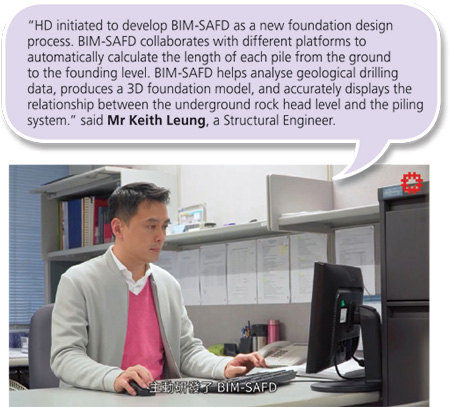
HD communicates with the wider public widely viasocial media, disseminates housing information through HA’s Facebook dedicated page of Public Housing Vistas (https://www.facebook.com/HKHousingAuthority) and via Instagram (https://www.instagram.com/HKHousingAuthority) with notable results. Photos and videos covering a wide range of topics on public housing, such as intake of public housing estates, sale of subsidised flats, construction technology and green initiatives have been uploaded for public viewing.
HD also shares videos on YouTube (https://www.youtube.com/user/HKHousingAuthority) to promote public housing activities, encourage public housing tenants to adopt healthy and green lifestyles, raise public awareness about the work of HA and HD, and provide recognition to colleagues for their unfailing support. Some videos are narrated by HD frontline staff (including professional officers, technicians and site staff), who share their stories at work to enhance external and internal communication, strengthen colleagues’ sense of belonging, and further reinforce the departmental corporate image.
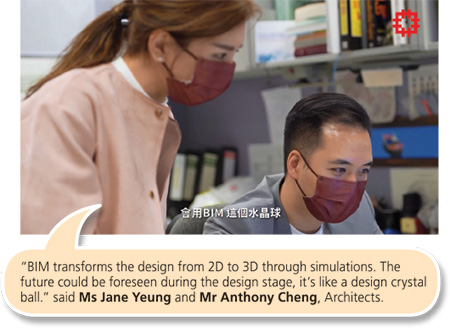
(https://www.facebook.com/HKHousingAuthority)


(https://www.instagram.com/HKHousingAuthority)



